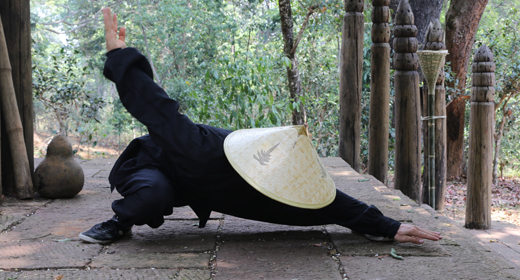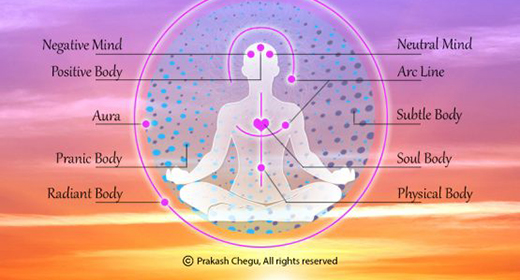Qigong is an ancient Chinese health care system that integrates physical postures, breathing techniques and focused intention.

The word Qigong (Chi Kung) is made up of two Chinese words. Qi is pronounced chee and is usually translated to mean the life force or vital-energy that flows through all things in the universe.
The second word, Gong, pronounced gung, means accomplishment, or skill that is cultivated through steady practice. Together, Qigong (Chi Kung) means cultivating energy, it is a system practiced for health maintenance, healing and increasing vitality.
Qigong is an integration of physical postures, breathing techniques, and focused intentions.
Qigong practices can be classified as martial, medical, or spiritual. All styles have three things in common: they all involve a posture, (whether moving or stationary), breathing techniques, and mental focus. Some practices increase the Qi; others circulate it, use it to cleanse and heal the body, store it, or emit Qi to help heal others. Practices vary from the soft internal styles such as Tai Chi; to the external, vigorous styles such as Kung Fu. However, the slow gentle movements of most Qigong forms can be easily adapted, even for the physically challenged and can be practiced by all age groups.
Like any other system of health care, Qigong is not a panacea, but it is certainly a highly effective health care practice. Many health care professionals recommend Qigong as an important form of alternative complementary medicine.
Qigong creates an awareness of and influences dimensions of our being that are not part of traditional exercise programs. Most exercises do not involve the meridian system used in acupuncture nor do they emphasize the importance of adding mind intent and breathing techniques to physical movements. When these dimensions are added, the benefits of exercise increase exponentially.
The gentle, rhythmic movements of Qigong reduce stress, build stamina, increase vitality, and enhance the immune system. It has also been found to improve cardiovascular, respiratory, circulatory, lymphatic and digestive functions.
Those who maintain a consistent practice of Qigong find that it helps one regain a youthful vitality, maintain health even into old age and helps speed recovery from illness. Western scientific research confirms that Qigong reduces hypertension and the incidence of falling in the aged population. One of the more important long-term effects is that Qigong reestablishes the body/mind/soul connection.
People do Qigong to maintain health, heal their bodies, calm their minds, and reconnect with their spirit.
When these three aspects of our being are integrated, it encourages a positive outlook on life and helps eliminate harmful attitudes and behaviors. It also creates a balanced life style, which brings greater harmony, stability, and enjoyment
There are a wide variety of Qigong practices. They vary from the simple, internal forms to the more complex and challenging external styles. They can interest and benefit everyone, from the most physically challenged to the super athlete. There are Qigong classes for children, senior citizens, and every age group in between. Since Qigong can be practiced anywhere or at any time, there is no need to buy special clothing or to join a health club.
Qigong’s great appeal is that everyone can benefit, regardless of ability, age, belief system or life circumstances.
Anyone can enrich their lives by adding Qigong to their daily routine. Children learning to channel their energy and develop increased concentration; office workers learning Qigong to reduce stress; seniors participating in gentle movements to enhance balance and their quality of life; caregivers embracing a practice to develop their ability to help others; prisons instituting Qigong programs to restore balance in inmates lives; midwives using Qigong techniques to ease child birth.
When an individual or group assumes responsibility and takes action for their health and healing, we all benefit. It is best to get referrals from people whose judgment you have confidence in. Check the Yellow Pages for Tai Chi schools, acupuncturists, or martial art academies. The National Qigong Association member directory is also an excellent source for finding instructors.
Keep in mind the following criteria for choosing a qualified instructor: what is their background and experience; are they of good character; do they treat everyone fairly and with respect; do they live what they teach; do they refrain from making wild, unsubstantiated claims; do they encourage and bring out a student’s highest potential? While keeping these points in mind, remember to trust your intuition in finding an instructor who is right for you.
How can I learn if there aren’t any teachers near me?
If there are no instructors in your area, many teachers regularly travel to give workshops in all regions of the country. Many excellent instructional books and videos are also available.
Begin by familiarizing yourself with the many resources available for learning Qigong. The internet is one of the best tools today for learning about Qigong.
Seek referrals in your area and visit local classes. Attending the annual NQA conference also provides an introduction to many styles of Qigong and practitioners from around the world.
After you have looked into some of these resources, find a style you feel comfortable with, and develop a consistent daily practice. It is recommended by experienced teachers to stay with a form for at least 100 days. A consistent practice is the most important asset you can develop.
When beginners ask, “What is the most important aspect of practicing Qigong?” The answer is always…”just do it.”









































